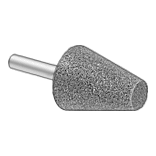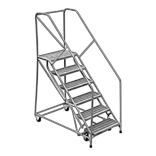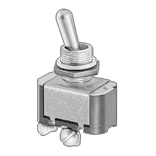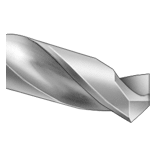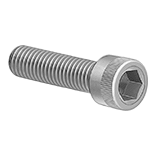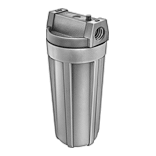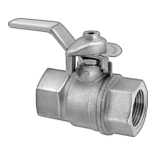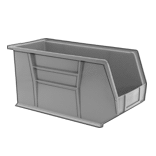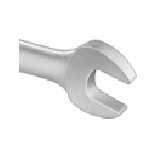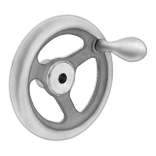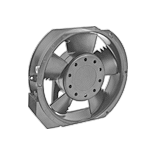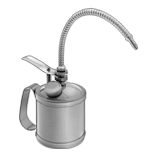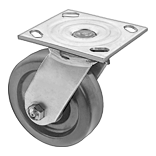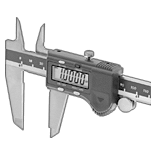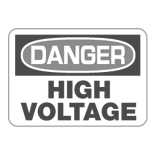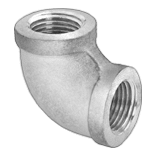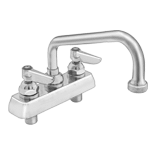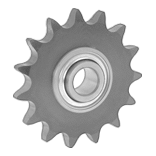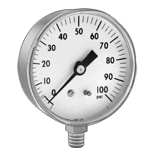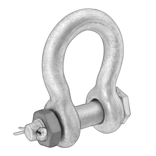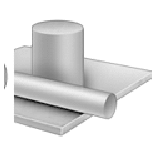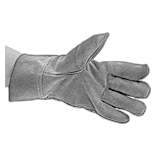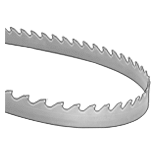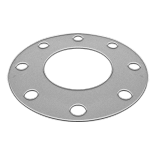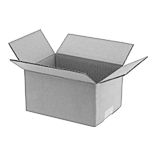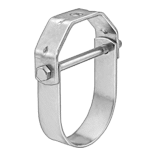Bronze Wire Cloth
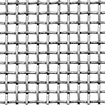
Bronze is more abrasion resistant than brass and copper for a longer service life. This wire cloth is often used in marine environments because it is more resistant to corrosion from salt water than stainless steel.
| Mesh Size | Opening Size | Open Area | Wire Dia. | 1 ft. × 1 ft. | 1 ft. × 2 ft. | 2 ft. × 2 ft. | 2 ft. × 3 ft. | 3 ft. × 3 ft. | |
| 4 × 4 | 0.203" | 65% | 0.047" | 0000000 | |||||
| 8 × 8 | 0.097" | 60% | 0.028" | 0000000 | |||||
| 16 × 16 | 0.045" | 50% | 0.018" | 0000000 | |||||
| 20 × 20 | 0.034" | 46% | 0.016" | 0000000 | |||||
| 30 × 30 | 0.021" | 40% | 0.012" | 0000000 | |||||
| 40 × 40 | 0.015" | 36% | 0.01" | 0000000 | |||||
| 50 × 50 | 0.011" | 30% | 0.009" | 0000000 | |||||
| 100 × 100 | 0.006" | 30% | 0.0045" | 0000000 | |||||
| 120 × 120 | 0.0046" | 30% | 0.0036" | 0000000 | |||||
| 150 × 150 | 0.0041" | 37% | 0.0026" | 0000000 | |||||
| 200 × 200 | 0.0029" | 33% | 0.0021" | 0000000 |
3 ft. Wd. | ||||||
|---|---|---|---|---|---|---|
| Mesh Size | Opening Size | Open Area | Wire Dia. | Lg., ft. | Each | |
| 4 × 4 | 0.203" | 65% | 0.047" | 1 | 00000000 | 0000000 |
| 4 × 4 | 0.203" | 65% | 0.047" | 10 | 00000000 | 00000000 |
| 4 × 4 | 0.203" | 65% | 0.047" | 20 | 00000000 | 00000000 |
| 4 × 4 | 0.203" | 65% | 0.047" | 50 | 00000000 | 00000000 |
| 8 × 8 | 0.097" | 60% | 0.028" | 1 | 00000000 | 00000 |
| 8 × 8 | 0.097" | 60% | 0.028" | 10 | 00000000 | 000000 |
| 8 × 8 | 0.097" | 60% | 0.028" | 20 | 00000000 | 000000 |
| 8 × 8 | 0.097" | 60% | 0.028" | 50 | 00000000 | 00000000 |
| 16 × 16 | 0.045" | 50% | 0.018" | 1 | 00000000 | 00000 |
| 16 × 16 | 0.045" | 50% | 0.018" | 10 | 00000000 | 000000 |
| 16 × 16 | 0.045" | 50% | 0.018" | 20 | 00000000 | 000000 |
| 16 × 16 | 0.045" | 50% | 0.018" | 50 | 00000000 | 00000000 |
| 20 × 20 | 0.034" | 46% | 0.016" | 1 | 00000000 | 00000 |
| 20 × 20 | 0.034" | 46% | 0.016" | 10 | 00000000 | 000000 |
| 20 × 20 | 0.034" | 46% | 0.016" | 20 | 00000000 | 000000 |
| 20 × 20 | 0.034" | 46% | 0.016" | 50 | 00000000 | 00000000 |
| 30 × 30 | 0.021" | 40% | 0.012" | 1 | 00000000 | 00000 |
| 30 × 30 | 0.021" | 40% | 0.012" | 10 | 00000000 | 000000 |
| 30 × 30 | 0.021" | 40% | 0.012" | 20 | 00000000 | 000000 |
| 30 × 30 | 0.021" | 40% | 0.012" | 50 | 00000000 | 00000000 |
| 40 × 40 | 0.015" | 36% | 0.01" | 1 | 00000000 | 00000 |
| 40 × 40 | 0.015" | 36% | 0.01" | 10 | 00000000 | 000000 |
| 40 × 40 | 0.015" | 36% | 0.01" | 20 | 00000000 | 000000 |
| 40 × 40 | 0.015" | 36% | 0.01" | 50 | 00000000 | 00000000 |
| 50 × 50 | 0.011" | 30% | 0.009" | 1 | 00000000 | 00000 |
| 50 × 50 | 0.011" | 30% | 0.009" | 10 | 00000000 | 000000 |
| 50 × 50 | 0.011" | 30% | 0.009" | 20 | 00000000 | 000000 |
| 50 × 50 | 0.011" | 30% | 0.009" | 50 | 00000000 | 00000000 |
| 100 × 100 | 0.006" | 30% | 0.0045" | 1 | 00000000 | 00000 |
| 100 × 100 | 0.006" | 30% | 0.0045" | 10 | 00000000 | 000000 |
| 100 × 100 | 0.006" | 30% | 0.0045" | 20 | 00000000 | 000000 |
| 100 × 100 | 0.006" | 30% | 0.0045" | 50 | 00000000 | 00000000 |
| 120 × 120 | 0.0046" | 30% | 0.0036" | 1 | 00000000 | 00000 |
| 120 × 120 | 0.0046" | 30% | 0.0036" | 10 | 00000000 | 000000 |
| 120 × 120 | 0.0046" | 30% | 0.0036" | 20 | 00000000 | 000000 |
| 120 × 120 | 0.0046" | 30% | 0.0036" | 50 | 00000000 | 000000 |
| 150 × 150 | 0.0041" | 37% | 0.0026" | 1 | 00000000 | 00000 |
| 150 × 150 | 0.0041" | 37% | 0.0026" | 10 | 00000000 | 000000 |
| 150 × 150 | 0.0041" | 37% | 0.0026" | 20 | 00000000 | 000000 |
| 150 × 150 | 0.0041" | 37% | 0.0026" | 50 | 00000000 | 00000000 |
| 200 × 200 | 0.0029" | 33% | 0.0021" | 1 | 00000000 | 00000 |
| 200 × 200 | 0.0029" | 33% | 0.0021" | 10 | 00000000 | 000000 |
| 200 × 200 | 0.0029" | 33% | 0.0021" | 20 | 00000000 | 00000000 |
| 200 × 200 | 0.0029" | 33% | 0.0021" | 50 | 00000000 | 00000000 |
Insect Screening

Keep bugs out of your space without blocking airflow or light. When choosing a screen, there are two factors that affect airflow and visibility: mesh size and wire diameter. The higher the mesh size, the smaller the holes. The thicker the wire diameter, the sturdier and tougher the screen. 16 × 18 mesh size with a 0.011" wire diameter is the most common combination—it balances good visibility and airflow with durability.
These screens are made with materials that won’t corrode when exposed to weather. 316 stainless steel and bronze screens have superior corrosion resistance.
Metal screens are stronger and more durable than fiberglass screens. They also hold up better against extreme temperatures. The wires won’t stretch, sag, or tear over time and have good visibility. Though, they’re less forgiving during installation compared to fiberglass screens, so they can get dented.
